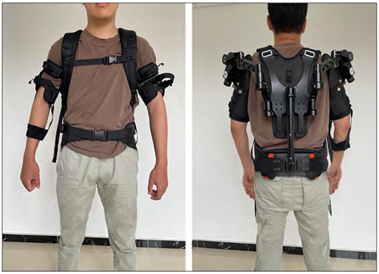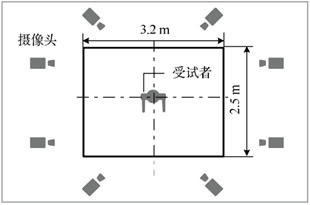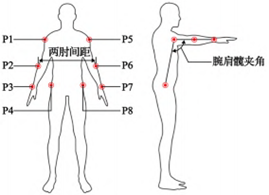Exoskeletons are wearable mechanical devices that may assist humans in completing various tasks and improve their load capacity and working efficiency. The development of exoskeletons is a major focus of research in the present day.
An evaluation of an exoskeleton robot’s coordination is an important process before a product can be put on the market. Many first-generation exoskeleton robots struggle with human-machine coordination problems; as such, there is an urgent demand for the development of methods to evaluate and optimize the coordination of exoskeleton robots to improve the experience of the product.
Currently, research on the human-machine interactions of exoskeletons is focused on comfort and assistive capability, not coordination. Researchers at Sichuan University proposed a coordination assessment method in three dimensions of motion utilizing motion capture. This method was applied to a new passive upper body exoskeleton in development.
The experiment tested a new passive upper body exoskeleton designed to provide auxiliary force for firefighters and assist them in various high-intensity firefighting tasks. The actions necessary for firefighting were decomposed into movements on the coronal, sagittal, and horizontal planes. Three basic tasks were simulated throughout the experiment.

Twelve men were selected as experimental subjects to complete the three simulated tasks both wearing and not wearing the passive upper body exoskeleton. These tasks included the lateral raise, front raise, and bench press, which exercised the coronal, sagittal, and horizontal planes, respectively. To record the motion of the subjects while performing these exercises, the researchers arranged 8 NOKOV optical motion capture cameras in the 3.2m × 2.5m experimental area to record the entire range of motion.

Reflective markers were attached on the shoulder, elbow, wrist, and hip of both sides of the body. The changes in spacing between the elbows, angles of the shoulders and hips, and changes in speed and acceleration at the shoulder, wrist, and elbow joints were recorded by the cameras. The eight reflective markers attached to the subjects are shown in the figure below.

After the experimental trials, subjects were also asked to provide a subjective evaluation of their performance on a five-point Likert scale. This data was compared to that collected by the motion capture cameras to verify the consistency of the data, assess the coordination between the passive upper body exoskeleton and the human operator, and provide a quantitative reference for further improvement of the system.
Bibliography: